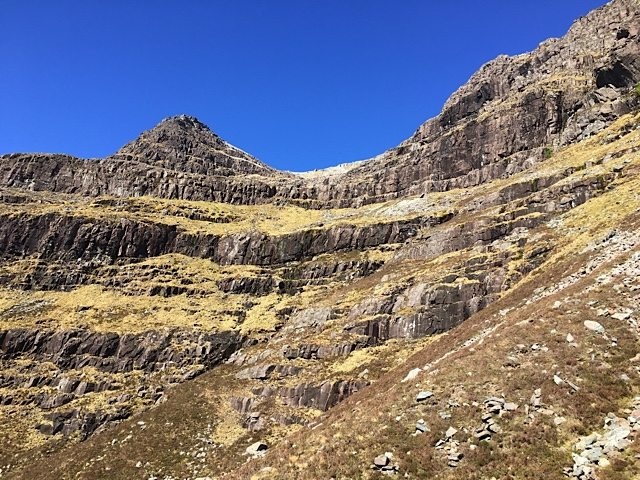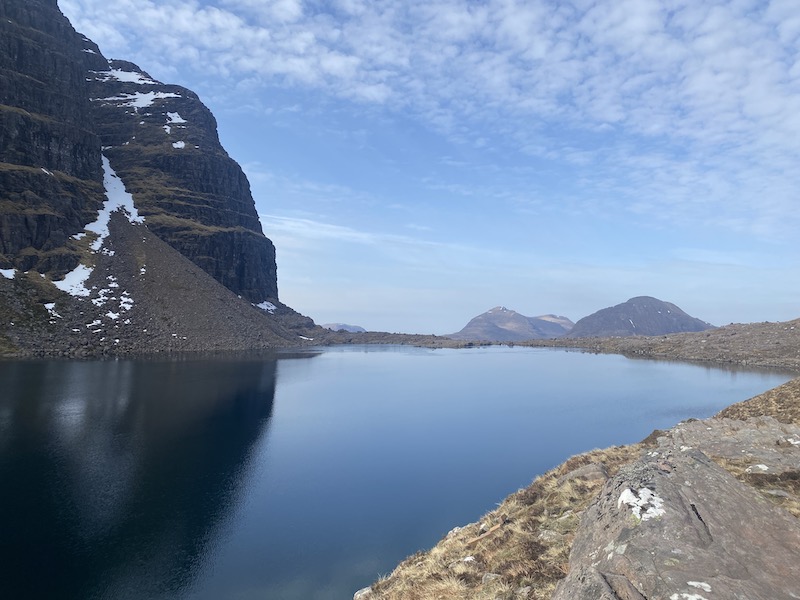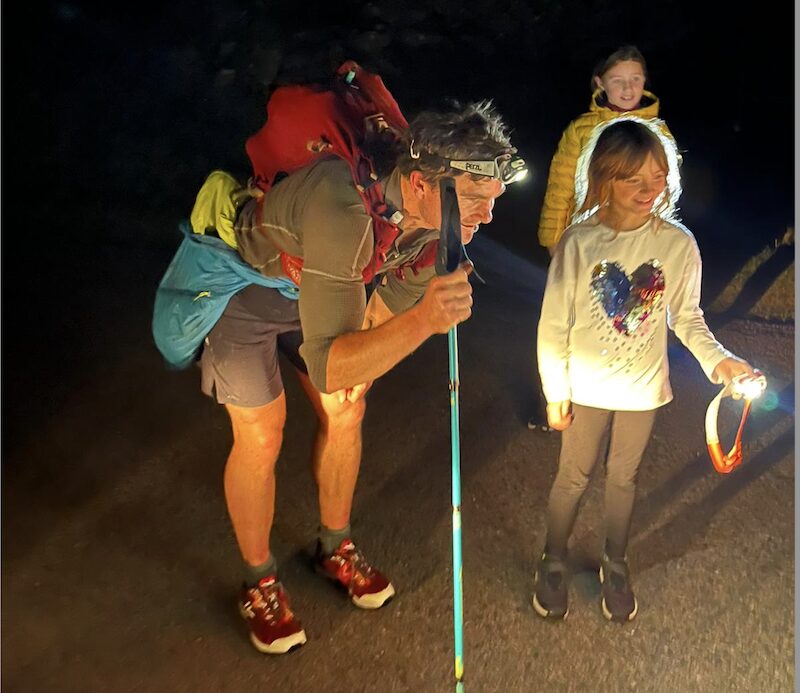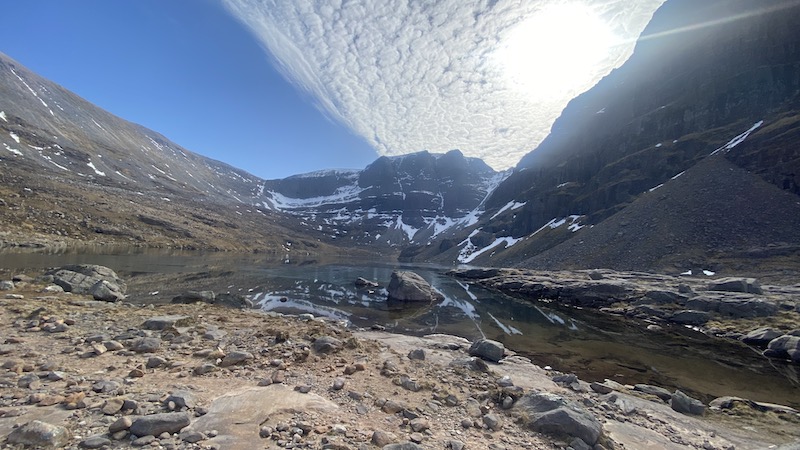An athlete from Wester Ross has set a new Fastest Known Time for a hill running and wild swimming challenge called the Ring of Stirling. James Killingbeck completed the mountain running and swimming circuit in the Torridon area of the Scottish Highlands, in 19 hours, 26 minutes and eight seconds. The previous fastest time was set by Chris Waters in September 2021 in a time of 22:42:16.
The Ring of Stirling is a running and swimming challenge, including the Liathach ridge.
.

What is the Ring of Stirling?
Billed as “the wildest run/swim in the UK”, the Ring of Stirling was inspired by the Frog Graham Round in the Lake District.
The story goes that Chris Waters was keen to create two routes, in Wales and Scotland. The Welsh route is called the Puddle Buckley (after the Paddy Buckley), while the Scottish route is the Ring of Stirling. He believes the Ring of Stirling is the toughest of the trilogy.
Starting and finishing in Shieldaig, Wester Ross, the aim is to complete a loop of approximately 55km on foot, including some 5600m of ascent and descent over 10 mountains, plus a total of 3.5km of swimming in the sea and lochs.
The circuit can be done solo, or as a team, supported or unsupported, and it is a self-motivated challenge, rather than an organised event. There are plenty of rules if you want to be added to the roll of honours, but ultimately it’s up to you how you complete it.
The round is named in memory of the late Chris Stirling, who loved the mountains of Wester Ross. He first discovered them in 2012 when he competed in his first triathlon: The Celtman! He went on to come second at the event in both 2014 and 2015 and then won it in 2017. Chris died in 2019.
Chris recommended the area to Chris Waters when he was looking for a place to set a possible Scottish Frog Graham Round. Chris Waters completed the inaugural Ring of Stirling (and now the second fastest time solo and unsupported) in 2021.


James sets new Ring of Stirling record
James, 37, who lives near Gairloch, also Wester Ross, completed the route solo and unsupported on Tuesday October 14, 2025. His total distance was 67km and total ascent close to 7000m, which is different to the distances stated on the website but this can be explained by route choice and variable GPS tracking.
James set out from the war memorial at Shieldaig at 1.15am. The first section included a 2km run then a 900 metre swim entering Eilean a Chaoil Bay to cross the tidal ‘Shieldaig narrows’.
James says: “Although a fairly short first swim, I needed to ensure it was completed at slack tide or very early ebb tide, which dictated my start time.
“I had been worried about whether I would be able to see well enough to navigate the swims in the dark and thankfully I was able to see just enough land silhouette with my goggles off to make good progress. I used my watch compass to reassure me. I also had my torch on in my tow float encase there was any boat traffic and to help me get out of the water. “
“It was actually quite exciting swimming in the dark on my own.”
James chose to wear a full wetsuit, as well as trail running shoes. He carried his spare kit in a 50l tow float that he pulled along during the swim sections.
He says: “After each swim I walked uphill a little to warm up then pulled off my wetsuit so I could start running. I kept my running shoes on because I knew it would be rocky and tricky exiting some of the swims. I didn’t bother with neoprene socks or gloves although I did wear a swim hat, goggles and ear plugs.”
After the first swim, James faced a running section to reach the Munro summits of Tom na Gruagaich (922m) and Sgurr Mor (986m) on Beinn Alligin.
He says: “A highlight of this part of the challenge was poking through the cloud just below the summit to see a moonlit view from the mountains. It was a beautiful calm night although most of the summits were clagged in.”
Swim two was another dark one, – 600m across Loch a’ Bhealaich – then a run over the Corbett Sgurr Dubh (Baosbheinn) (875m) before another swim of some 900m across Loch na h-Oidhche where dawn finally broke at the swim exit.
James then ran to a height of 852m to reach the summit of the Corbett Beinn an Eoin after which came the fourth swim section, around 500m in Loch Coire Mhic Fhearchair.
Loch Coire Mhic Fhearchair on a sunnier day. Photo taken by FionaOutdoors
The next run was the longest of the Ring, taking in the western summit of Beinn Eighe, Ruadh-stac Mor (1010m), then the ridge of Liathach including the summits Stuc a Choire Dhuibh Bhig (915m), Spidean a Choire Leith (1055m) and Mullach an Rathain (1023m) before reaching the 903m summit of the Corbett Beinn Damh.
James says: “This section included some of the toughest parts of the adventure. It was a long running section and it came after a very cold swim in Loch Coire Mhic Fhearchair. Although it wasn’t a long swim, as soon as I got into the water of the high lochan that sits behind Beinn Eighe, it felt very chilly especially for the hands.”
“I think this affected my fuelling, too. The cold swims sapped my energy and I probably should have eaten more because I felt quite drained going over Ruadh-stac Mor.”
Night fell during the fifth swim, which was 600m across Loch Damh before the final 5km leg of running over Ben Sheildaig. James says: “While Ben Shieldaig is ‘only’ 534m tall – a relatively small hill compared to the others in the Ring of Stirling – it was a final sting in the tail.
“The slopes are rugged and covered in vegetation and it was a tough descent to the end. It was also dark again and I was feeling pretty exhausted by this point.
“But then I heard a group of family and friends and their kids waiting for me at the finish point. It was so amazing to see them and I hadn’t been expected that. There was a banner and cheering.
“I was delighted to set a new fastest time. Doing this challenge in October made it quite hard because of the hours of darkness, the cold and the weather so I was very happy with how things went.”

Highs and lows of Ring of Stirling
James had been intimidated by the idea of night swimming. He says: “I had been nervous about swimming in darkness, especially if there was low mist. I was worried I would lose my sense of direction but it turned out to be more enjoyable and easier than expected.
“I had a compass on my watch and the water was very calm, which really helped.”
The many hours of darkness and low cloud in the mountains meant James needed to have a sharp focus on navigation. He says: “I needed to be thinking about my route all the time, which is tiring mentally. In summer, you could choose a day with long daylight hours and better visibility, but in October there are no midges and the vegetation is down a little, so its swings and roundabouts.
“However, I also enjoyed some amazing views and glimpses between low clouds. I was treated to a brocken spectre and seeing the landscape lit by the moon was fantastic.
“I think I got lucky with the autumn weather overall. I was also happy to complete it without any issues or injuries. I have had a couple of years of injuries and niggles (which is why I had to leave it until October) so it was great to complete the route without physical problems, apart from feeling knackered.”
“I would highly recommend this route for people who have a lot of experience in the mountains and wild swimming, it’s such a phenomenal part of the world and this is an incredible way to experience it. Moving well in the dark can be really satisfying and heightens your senses, but maybe do it in the summer with more daylight, it’s challenge enough as it is!”

Tips for the Ring of Stirling
James offers some tips for people who want to do the Ring of Stirling.
Respect the remote environment.
James says: “I know this area of Scotland very well because it’s close to where I live but even still things can easily go wrong.
“It’s a remote area and if you need emergency help it can take a long time to reach you. Make sure you have all the right kit with you to stay warm and safe if something does go wrong. Chris also has good advice for this on his website.
“I have recently become a member of Torridon MRT and I am much more aware of how long it can take a rescue team to reach someone in need. We should all respect the environment we are going into, especially if doing a challenge solo and unsupported.”
Choose the right kit
James wore a triathlon style wetsuit for the swims. He also swam in his running shoes – VJ XTRM2 – for better grip when entering and exiting the swims. James adds: “The VJ shoes are great for grip in the mountains.”
He carried dry kit for running in a 50l tow float, where he could place a torch for the night swims.
James changed out of the wetsuit into running clothes for each run section and carried other warm layers and emergency items, including a blizzard bag, full clothing layers, a warm jacket, plus a Garmin InReach GPS tracker.
James found it a benefit to use running poles during the challenge.
Wetsuit tip
James didn’t want to put a wet wetsuit inside his running bag, so he placed the wetsuit inside the dry bag, turned inside out. He says: “This meant I could keep my other kit dry. It did mean I was carrying a wetsuit and some extra water from the loch, but I wanted to keep my running pack and other items dry.”
Less wind
Although it was October, James chose a day with low wind which meant the water sections were calm and the high mountains were much more pleasant.
Find out more about the Ring of Stirling.
Also read about Siobhan Killingbeck’s Martin Moran Round FKT. James and Siobhan are married with two children.

